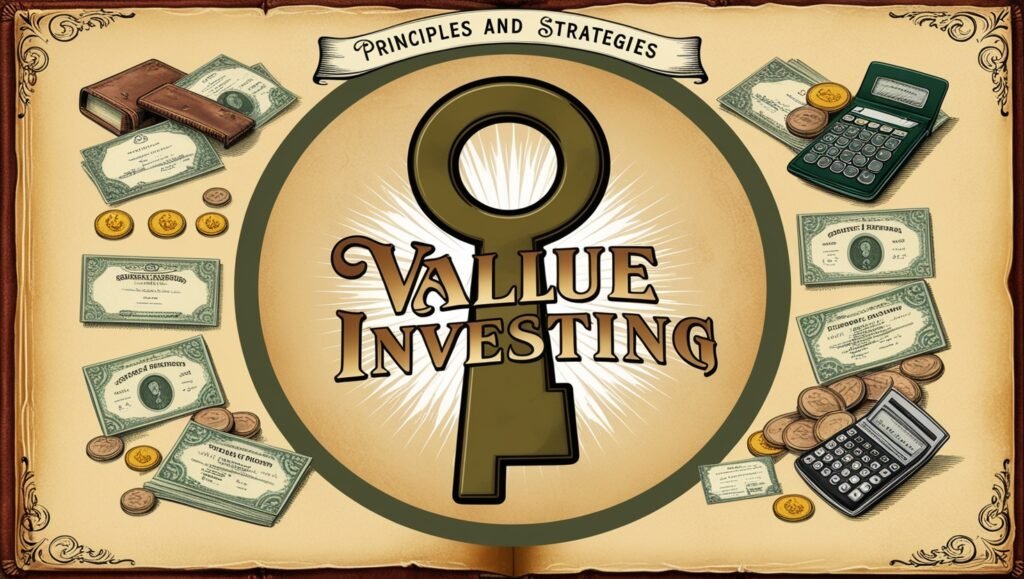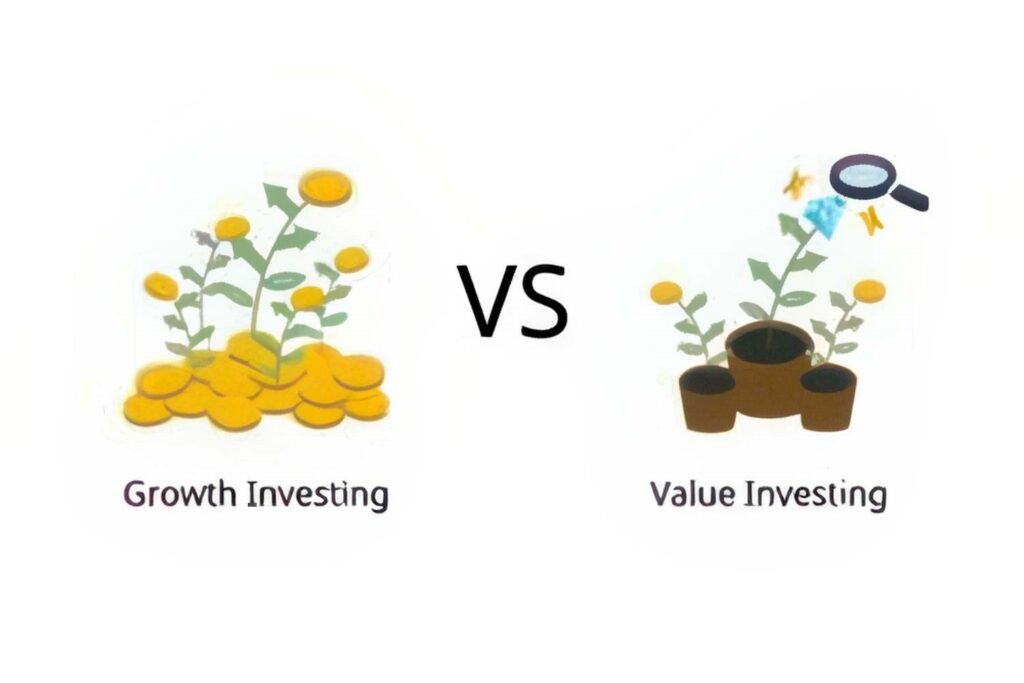Value investing is a proven wealth building strategy that is frequently used by investing greats like Warren Buffett. Value investing rules can transform your portfolio by targeting undervalued stocks with strong fundamentals. Learning about value investing will able you to invest in solid firms with successful track records.
Today we will now explore the core principles of value investing. We will also uncover the top strategies that you can use for a successful value investing.
Core principles of value investing
Value investing has core rules that guide investors to make better decisions. These key principles form the base of successful value investing strategies.
Margin of Safety
The margin of safety is very important in value investing that’s buying stocks at a large discount to their true value. This aims to protect your portfolio against potential losses from analysis errors or market events. To calculate margin safety, first find the intrinsic value and then set a purchase target price below that value.
For example, if a stock is worth $100, a 20% margin of safety means buying under $80. This strategy decreases risk and improves potential long-term returns.
Intrinsic Value

A company’s intrinsic value is its true worth which can differ from the current market price. Knowing intrinsic value is vital to find underpriced stocks.
Methods to measure intrinsic value are:
- Comparable company analysis
- Discounted Cash Flow (DCF)
- Dividend Discount Model (DDM)
- Asset-based valuation
The difference between intrinsic value and market price matters in value investing.
| Intrinsic Value | Market Price |
| Based on fundamental analysis | Influenced by market sentiment |
| Relatively stable over time | Can fluctuate rapidly |
| Reflects long-term potential | May reflect short-term trends |
Long-Term Perspective
Value investing stresses patience and a long-term perspective. By focusing on long-term strategy value investors avoid short-term market changes.
This strategy allows returns to increase over time and the market eventually recognizes its true value. Also helps weather temporary downturns and avoid impulsive moves based on volatility.
Fundamental Analysis
Fundamental analysis is central to value investing and examines financial health and business models. Key metrics used in fundamental analysis involve: debt, cash flow, revenue growth and margins. Value investors also understand industry position, competitive advantage and management quality.
Thoroughly assessing these factors provides a comprehensive view of potential and helps to make right decisions.
This technique helps to find undervalued companies with strong fundamentals that’re overlooked by the broader market.
Value Investing Strategies
Now, let’s discuss some popular value investing strategies to practically find undervalued stocks.
Contrarian Investing

Contrarian investing goes against the grain of market trends. This strategy includes purchasing stocks that are out of favor with most investors. By finding unpopular or overlooked stocks, contrarian investors want to capitalize on market overreactions by .
While this approach can lead to significant gains, it also has some risks. Investors must carefully assess whether a stock is truly undervalued or if there are valid reasons for its unpopularity.
Dividend Investing
Dividend investing targets companies that pay strong and steady dividends. This approach appeals to value investors who want possible capital growth and regular income.
The key is finding businesses with stable dividend increases and not just high yields. Investors should review things such as the financial health of a company and payout ratios to ensure dividends will continue.
Reinvesting dividends can also increase long-term returns through compounding. This method usually leads to a portfolio of mature and stable companies with robust cash flows.
Deep Value Investing
Deep value investing means seeking seriously undervalued assets, usually in struggling or overlooked companies. One popular deep value approach is net-net investing, focusing on companies trading below their net current asset value.
This strategy can potentially yield high returns but has considerable risks too.
Some deep value investing challenges include:
- Higher volatility and uncertainty
- Few true bargains available
- Need for lots of research and patience
- Risk of value traps
Quality at a Reasonable Price (QARP)

QARP balances company quality with valuation. This aims to find well-run businesses at fair prices and not just the cheapest stocks. Key indicators of company quality are good management, strong financials and competitive advantages
To calculate a reasonable price, investors may use metrics such as the PEG ratio, factoring in growth potential. QARP is a middle ground between pure value and growth investing.
These value investing strategies offer different ways to apply value investing principles. Investors often mix elements from multiple approaches to fit their financial goals and risk tolerance.
Key Metrics for Value Investors
To effectively use value investing strategies investors depend on several key financial metrics. These metrics help evaluate a company’s profitability, growth potential and financial health. Let’s explore some of the most important metrics used in value investing:
- Price-Earnings Ratio: Compares stock price to earnings per share. A lower ratio can mean an undervalued stock. For example, a ratio of 15 means investors will pay $15 for every $1 of earnings.
- Price-Book Ratio: Compares market value to book value. A ratio under 1 may indicate an underpriced stock, but important to consider industry and growth prospects.
- Debt-Equity Ratio: This ratio shows a company’s debt versus equity. A lower ratio generally signals a stronger financial position. However, some industries naturally have higher debt.
- Free Cash Flow: Cash generated after capital expenditures. Strong, steady free cash flow can show ability to fund growth, pay dividends, or reduce debt.
- Return on Equity: Measures capital efficiency in generating profits. A higher return often signals better management and use of capital.
These metrics are important tools for value investors that help them identify potentially undervalued companies.
Value Investing Process
Using value investing principles needs a systematic methodology. Let’s review the major steps in the value investing process which help investors find and benefit from undervalued opportunities:
Screening for Potential Investments
The first step is screening for potential investments. Investors use financial ratios and metrics to filter stocks meeting specific criteria around valuations, debt levels and dividends etc. Industry and sector analysis help identify promising areas. Creating a watchlist allows tracking stocks for future opportunities.
In-Depth Research and Analysis

Once potential investments are found, value investors do thorough research. This means reading financials to understand a company’s growth potential and financial health.
Valuing competitive edges helps decide if a company has a stable advantage in its sector. Examining management quality is very important since strong leadership can greatly affect long-term success.
This deep analysis of a company’s fundamentals helps investors make right investing decisions on the basis of facts rather than market sentiment.
Valuation and Decision Making
The final step is applying valuation models to find a stock’s intrinsic value. Investors may use techniques like comparative valuation or discounted cash flow. Based on this, they set a target stock price.
The buy/sell decision is then made by comparing the current market price to estimated intrinsic value, always considering margin of safety.
By following this structured process, value investors can effectively apply their strategies and make well-informed investment decisions.
Risks and Challenges in Value Investing

While value investing strategies can be rewarding, they have risks and challenges to know about:
- Value Traps: Some stocks seem cheap but are actually poor investments with underlying business problems.
- Market Inefficiencies: Value investing depends on market inefficiencies, but these can persist longer than expected to test an investor’s patience.
3.** Psychological Factors**: Keeping undervalued stocks long-term can be emotionally difficult when the market moves against you.
- Changing Market Dynamics: Rapid changes in consumer behavior and technology can quickly shift a company’s value, so staying informed and adaptable is very important.
Understanding these risks is key for successfully using value investing principles and avoiding pitfalls.
Adapting Value Investing to Modern Markets
As markets change, value investing strategies must adapt to stay effective. Technology and globalization have transformed business operations and information flows. This rapid change means value investors should consider new factors when analyzing companies.
For example, intangible assets such as brand value and intellectual property now play a bigger role in a company’s value.
Environmental, Social and Governance (ESG) factors have also become more important. Many investors now include these standards in their value investing principles by recognizing that stable practices can affect long-term profitability.
Balancing traditional value tools with these modern considerations is very important. While the core principles of value investing remain relevant, successful investors should stay flexible and open-minded to new approaches in today’s fast-changing market environment.
Famous Value Investors and Their Strategies
Many famous investors have successfully used value investing principles in their careers. Warren Buffett, the “Oracle of Omaha,” buys undervalued companies with strong competitive advantages and holds them for the long term. His strategy focuses on thoroughly understanding a business before investing.
Seth Klarman, known for risk-averse investing, seeks investments with a large margin of safety. He often targets distressed assets and out-of-favor industries. Klarman’s patience and willingness to hold cash when good deals are scarce show key value strategies.
Joel Greenblatt made the “Magic Formula” for systematic value investing. It ranks stocks by earnings yield and return on capital then invests in the top companies. Greenblatt’s method shows how value principles can be quantitative.
Conclusion
value investing principles give a proven approach to build wealth in stocks. Investors can potentially get better returns by targeting undervalued companies, keeping a long term view and doing thorough analysis.
However, it’s important to adapt these approaches to modern markets and know the risks. As you continue investing, remember value investing takes patience, discipline and always learning.
To expand your knowledge more, read our blog post comparing growth vs value investing. This blog post will help you understand how these two common strategies differ and which might best match your investment goals and risk tolerance.


